Doepfer A-196 Handleiding
Doepfer
Niet gecategoriseerd
A-196
Bekijk gratis de handleiding van Doepfer A-196 (8 pagina’s), behorend tot de categorie Niet gecategoriseerd. Deze gids werd als nuttig beoordeeld door 252 mensen en kreeg gemiddeld 4.9 sterren uit 126.5 reviews. Heb je een vraag over Doepfer A-196 of wil je andere gebruikers van dit product iets vragen? Stel een vraag
Pagina 1/8

doepfer System A - 100 PLL A-196
1
1. Introduction
Module A-196 contains a so-called Phase Locked
Loop circuit (PLL). A PLL consists of three parts:
VCO (linear voltage-controlled oscillator with rectangle
output), phase comparator (PC), and low-pass filter
(LPF). The three parts are connected in the A-196 with
normalled sockets to form the standard closed-loop
PLL frequency-feedback system. The normalled soc-
kets allow individual access to each part of the PLL
and enable other patches than the standard PLL (e.g.
insertion of external modules).
The andVCO is equipped with the controls Range
Offset. The range switch is used to select one of three
frequency ranges. The Offset control defines the maxi-
mum frequency of the VCO.
The module contains three different types of phase
comparators that are selected with a 3-position
switch.
The LED indicates if the PLL is locked for PC2 , i.e. if
the frequency of the internal VCO is the same as the
frequency of the external input signal.
The frequency of the built-in low pass filter is manu-
ally adjusted with the frequency control.
CV In
locked (2)
Offset
A-196
PLL
Out
In 1
Range
Out
VCO
Type
In 2
(Signal)
Out
PC
LPF
Frequ.

A-196 PLL System A - 100 doepfer
2
2. Basic principles
The three units VCO, phase comparator (PC) and low
pass filter (LP) form a standard closed-loop frequency-
feedback system: The VCO output (linear response,
rectangle output) is compared with an external signal
(e.g. A-110 VCO) in the PC. The PC output is a digital
high/low signal that indicates if the frequency resp.
phase difference of the two input signals is negative,
zero or positive. This signal is processed by the LP to
generate a smooth control voltage that controls the
frequency of the VCO. The units VCO, PC and LPF
form a frequency feedback loop that works like this:
The CV (LP output) increases (decreases) as long as
the external frequency is higher (lower) than the fre-
quency of the internal VCO and stops increasing as
soon as both frequencies become identical.
But there are some stumbling blocks: Different types
of phase comparators with advantages and disad-
vantages can be made. Some phase comparators e.g.
even lock at harmonics, i.e. if the two frequencies to be
compared are integer multiples. For some applications
this "fault" may be used to create interesting effects.
The A-196 contains 3 different types of phase compa-
rators: PC1 is a simple exclusive OR, that even locks
at harmonics. PC2 is a so-called RS flipflop and PC3 a
more complex digital memory network. The user can
select one of the three phase comparators with a
3-position switch. When PC2 is used a LED displays
the "locked" state, i.e. when the frequency of the
internal VCO is identical to the external frequency.
Special attention has also to be directed to the fre-
quency of the LP. To obtain a smooth control voltage
for the VCO the frequency of the LP has to be much
smaller than the lowest frequency of the internal or
external audio signal. Otherwise the frequency of the
internal VCO will jitter or wobble around the correct
frequency. But for special effects this frequency jitter
can be used intentionally.
Example: frequencies in the range 50Hz...1kHz have
to be processed with the PLL. Therefore the frequency
of the LP has to be about 10Hz or even less. Such a
low frequency of the LPF causes a noticeable slew of
the internal VCO. When the frequency of the external
signal jumps e.g. between 50Hz and 1kHz it takes
about 0.1 second until the internal VCO reaches the
new frequency (like portamento). Consequently one
has to find a compromise between the frequency jitter
and portamento. But these remarks are valid only for
the "ideal" working PLL. As the A-196 is used in a
musical enviroment these "problems" and "dis-
advantages" with jitter and slew time lead to additional
musical applications like portamento effects, wobbling
frequencies or harmonic locking according to the type
of frequency comparator and time constant of the PLL
low pass filter.

doepfer System A - 100 PLL A-196
3
Fig. 1: Internal construction of the A-196
Product specificaties
| Merk: | Doepfer |
| Categorie: | Niet gecategoriseerd |
| Model: | A-196 |
Heb je hulp nodig?
Als je hulp nodig hebt met Doepfer A-196 stel dan hieronder een vraag en andere gebruikers zullen je antwoorden
Handleiding Niet gecategoriseerd Doepfer

31 Maart 2024

8 Juli 2023

6 Juli 2023

4 Juli 2023

3 Juli 2023

3 Juli 2023

2 Juli 2023

2 Juli 2023

30 Juni 2023

30 Juni 2023
Handleiding Niet gecategoriseerd
- Revlon
- Black Hydra
- Defy
- Ambrogio
- Maytag
- Buxton
- CAT
- V-Tone
- CradlePoint
- Polaroid
- Aligator
- Zafferano
- XFX
- Emga
- Futurelight
Nieuwste handleidingen voor Niet gecategoriseerd
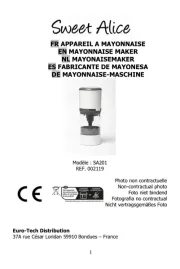
15 September 2025

15 September 2025

15 September 2025
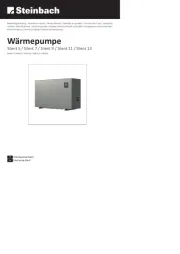
15 September 2025
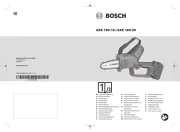
15 September 2025

15 September 2025

15 September 2025
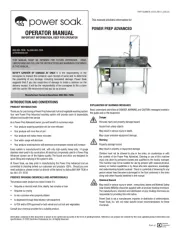
15 September 2025

15 September 2025
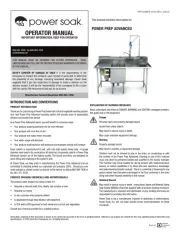
15 September 2025